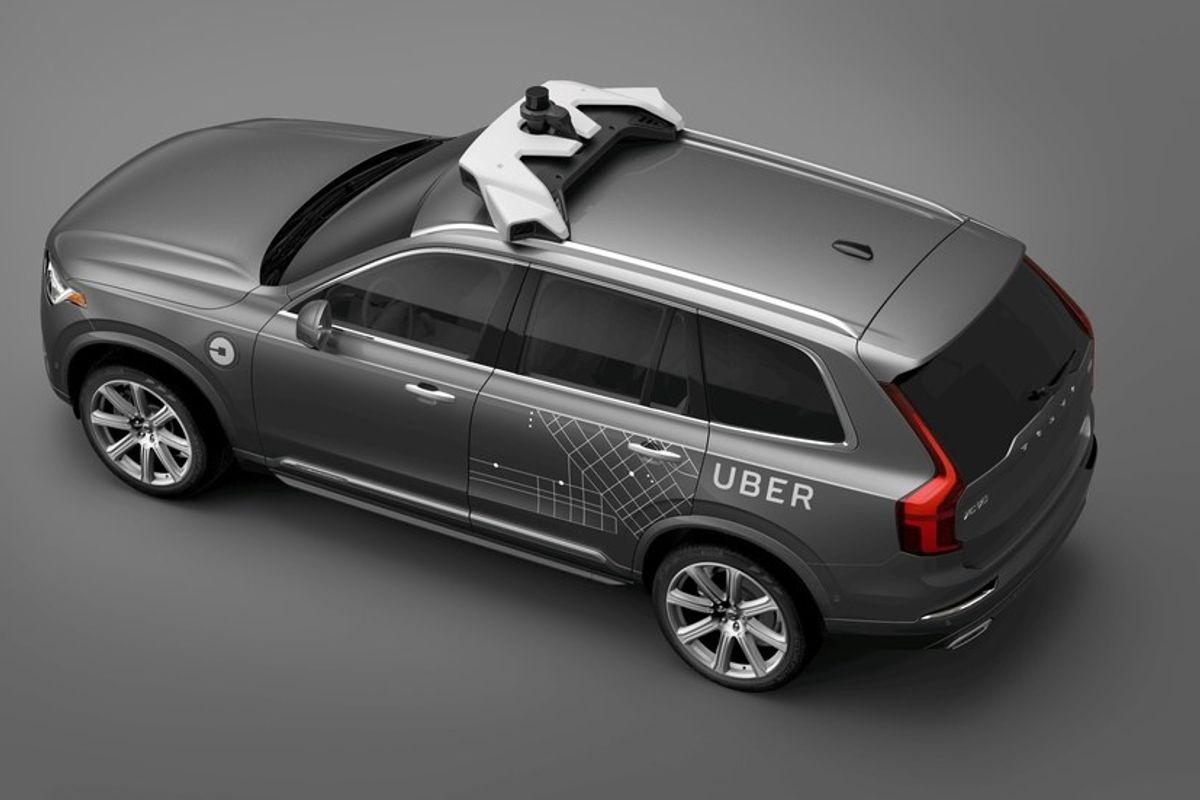Self Driving Cars

Volvo/Uber
Uber believes self-driving car saw pedestrian before fatal collision, but chose not to react: Report
Insiders familiar with investigation say how the car's system was 'tuned' is to blame for the death

Insiders familiar with investigation say how the car's system was 'tuned' is to blame for the death
A self-driving Uber car which struck and killed a pedestrian, detected the woman as she crossed the street, but chose not to react because of how its software had been reportedly tuned to avoid 'false positives.'
This is the understanding of Uber executives, according to two people who have been briefed on the matter ,and spoke anonymously to The Information.
Read More:
Uber and the US National Transportation Safety Board (NTSB) have been jointly investigating what caused the test vehicle to hit Elaine Hertzberg, 49, as she pushed her bicycle across a road in Tempe, Arizona on the night of March 18.
The Information claims the car's sensors detected Herzberg but that its software decided not to react immediately. This, it is reported, resulted from how the software had been tuned to ignore false positives, like plastic bags floating out in front of the car. Unfortunately, one of the sources said Uber executives believe the software used in this incident had been tuned too far in that direction, causing the car not to react properly when seeing Hertzberg.
The report claims that Uber's investigation found the car's sensors were likely working correctly, combining data from cameras, lidar and radar systems to identify objects around it. The problem, the insiders claim, is what the car's broader system chose to do — or not do — with that information.
Meanwhile, footage released by Tempe Police shortly after the incident shows how the car's safety driver looked down moments before the collision. According to an October 2017 video promoting its autonomous vehicles, Uber calls these employees "vehicle operators" and claims they are in the driver's seat "to make sure the vehicle does exactly what it's supposed to do."
Tempe Police Vehicular Crimes Unit is actively investigating
the details of this incident that occurred on March 18th. We will provide updated information regarding the investigation once it is available. pic.twitter.com/2dVP72TziQ
— Tempe Police (@TempePolice) March 21, 2018
Uber said: "We're actively cooperating with the NTSB in their investigation. Out of respect for that process and the trust we've built with NTSB, we can't comment on the specifics of the incident. In the meantime, we have initiated a top-to-bottom safety review of our self-driving vehicles program and brought on former NTSB chair Christopher Hart to advise us on our overall safety culture. Our review is looking at everything from the safety of our system to our training processes for vehicle operators, and we hope to have more to say soon."
The incident raises serious concerns about the development of autonomous cars and, in particular, the testing of these vehicles on public roads. Waymo, General Motors, Toyota, Lyft, and many other firms are racing to create fleets of robotic taxis without drivers.
Waymo, owned by Google parent Alphabet, announced in November 2017 that it plans to offer fully driverless rides to passengers in Arizona soon —that is, rides in a vehicle with no safety driver behind the wheel. Meanwhile, only last week, Lyft, a major rival to Uber, began operating an autonomous taxi service in Las Vegas, albeit one with a safety driver behind the wheel at all times.
GearBrain Compatibility Find Engine
A pioneering recommendation platform where you can research,
discover, buy, and learn how to connect and optimize smart devices.
Join our community! Ask and answer questions about smart devices and save yours in My Gear.
